Top 8 FogBugz Alternatives for Bug Tracking and Agile Project Management

Sorry, there were no results found for “”
Sorry, there were no results found for “”
Sorry, there were no results found for “”

Stuck with a bug tracker that moves slower than your sprint?
If FogBugz’s outdated interface and clunky workflows are holding your agile team back, you’re not alone. Software development today demands real-time collaboration, intuitive design, and tools that actually accelerate your process, not slow it down.
You need an agile project management platform that supports bug tracking, user stories, sprint planning, code reviews, and cross-functional collaboration, without the drag.
These FogBugz alternatives are designed for high-performing dev teams who want to ship faster and smarter.
Let’s examine the best tools that help you track issues and tasks with less friction and much more power.
Here are the top alternatives to FogBugz for different workflows and team structures:
| Tool | Best For | Key Features | Pricing* |
| ClickUp | Individuals, small businesses, agencies, and enterprises needing all-in-one agile project management and team collaboration | Customizable views, AI assistance, sprint charts, templates, real-time dashboards, team collaboration, automation | Free plan available; Custom pricing for enterprises |
| Jira | Large enterprises and software development teams looking for bug and issue tracking | Kanban boards, agile reporting, customizable workflows, issue and bug tracking, developer tool integrations | Free plan available; Paid plans start at $7.53/user per month |
| YouTrack | Agile teams and solo developers needing issue tracking and agile workflows | Agile boards (Scrum, Kanban), smart search, time tracking, reporting, AI assistance | Free plan available; Paid plans start at $4.40/user/month |
| Linear | Modern software teams in need of streamlined sprint management and issue tracking | Cycles and projects, roadmaps, issue tracking (bugs, features, tasks), keyboard-first design, Linear AI, GitHub integration, | Free plan available; Paid plans start at $8/user/month (billed annually) |
| Zoho BugTracker | Software development and testing teams using the Zoho ecosystem | Bug submission, customizable fields and workflows, reports. automation, time tracking, built-in chat, file sharing, SLA management | Free plan available; Paid plans start at $3/user/month (billed annually) |
| GitLab | DevOps teams seeking end-to-end software development lifecycle management | Source code management (Git repositories), CI/CD pipelines, issue tracking, epics, roadmaps, Kanban boards, security scanning (SAST, DAST), GitLab Duo | Free plan available; Paid plans start at $29/user/month (billed annually) |
| Backlog | Software development project teams looking for sprint planning and team collaboration tools | Task management, bug tracking, Gantt charts, burndown charts, Git and SVN repositories, wikis, file sharing, Kanban boards | Free plan available; Paid plans start at $35/month |
| Trello | Individuals and teams needing a simple, visual way to organize tasks and projects using Kanban-style boards | Boards, lists, cards, checklists, attachments, power-ups, automation (Butler), templates | Free plan available; Paid plans start at $5/user/month (billed annually) |
While FogBugz has served teams well for basic bug tracking, many users find its limitations frustrating. It’s kind of like using a landline today—it works, but you’re missing out on so many modern capabilities.
Here are some of the issue-tracking tool’s shortcomings:
🧠 Fun Fact: Remember Y2K—the doomsday bug that had everyone thinking computers would crash at midnight in the year 2000? While the world kept spinning, FogBugz was actually born that same year.
That means it’s been around since floppy disks were still a thing! In tech years, that’s practically prehistoric. And just like Y2K-era software, FogBugz is starting to show its age, especially for modern dev teams who need faster, more flexible bug tracking tools.
📖 Also Read: The Ultimate Guide To Scrum Project Management
Why squash bugs with clunky tools when great solutions with advanced features can help you do much more? Here are the top FogBugz alternatives for agile issue management and project management for development teams.
Our editorial team follows a transparent, research-backed, and vendor-neutral process, so you can trust that our recommendations are based on real product value.
Here’s a detailed rundown of how we review software at ClickUp.
If you’re searching for a modern, scalable, and highly collaborative FogBugz alternative for your development team, we have something for you.
ClickUp, your everything app for work, is designed for agile teams, developers, and product managers who need issue tracking, project management, and team collaboration within a single platform.
ClickUp for Software Teams lets you rapidly capture, assign, and prioritize bugs or user stories. With customizable statuses, fields, and templates, teams can adapt the workflow to fit any software development process.

ClickUp for Agile Teams lets software developers and engineers build efficient, flexible workflows (Scrum boards, Kanban lanes, or a mix that actually works for your team) to keep projects moving and teams aligned.
ClickUp’s powerful AI and automation features eliminate busywork so your team can focus on building.
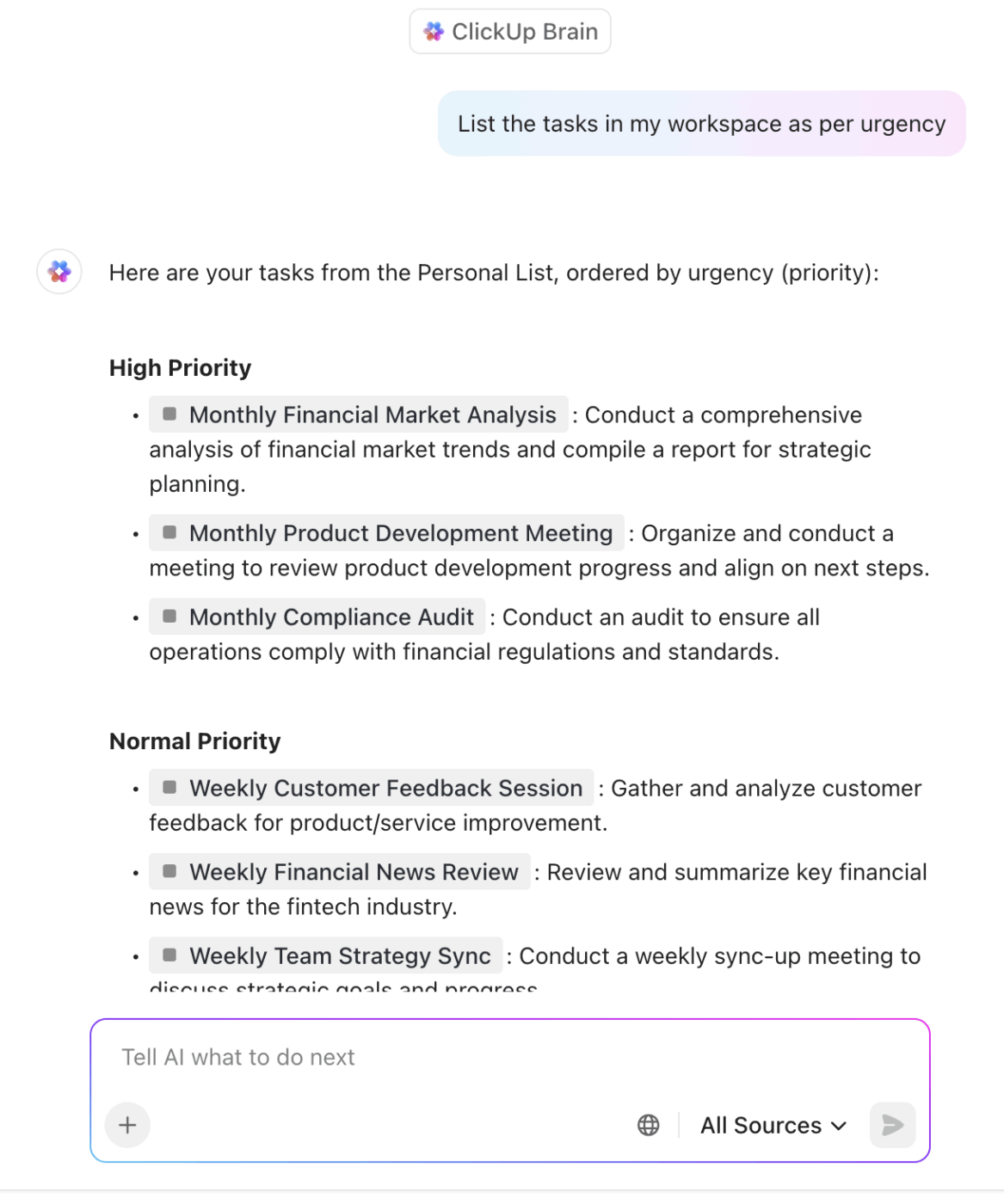
ClickUp Brain automatically assigns tickets, updates sprints and tasks, refines your backlog, and even turns retros, PRD reviews, and Slack chats into actionable tasks with clear owners and next steps. And everything stays connected—pull requests, files, and project links show up right where you need them, so your team’s never left guessing.
With ClickUp Automations, repetitive actions like assigning bugs, updating statuses, and notifying stakeholders happen instantly—keeping your workflow efficient and your team aligned.

The ClickUp Sprints module is purpose-built for agile teams to track progress, see what’s blocked, and manage sprint backlogs, all in one place.
You can also configure ClickUp Autopilot Agents to monitor and report on project activities or sprints for specific triggers, such as the completion of tasks, updates to issue statuses, or new bug reports.
ClickUp isn’t just for software teams. Project management teams can manage complex workflows with task dependencies, subtasks, and checklists—making blockers easy to spot.
Interactive Gantt charts and a choice of 15+ Views, such as List, Kanban, Calendar, and Timeline Views, simplify cross-functional coordination. Keep stakeholders updated through detailed reporting with customizable ClickUp Dashboards.
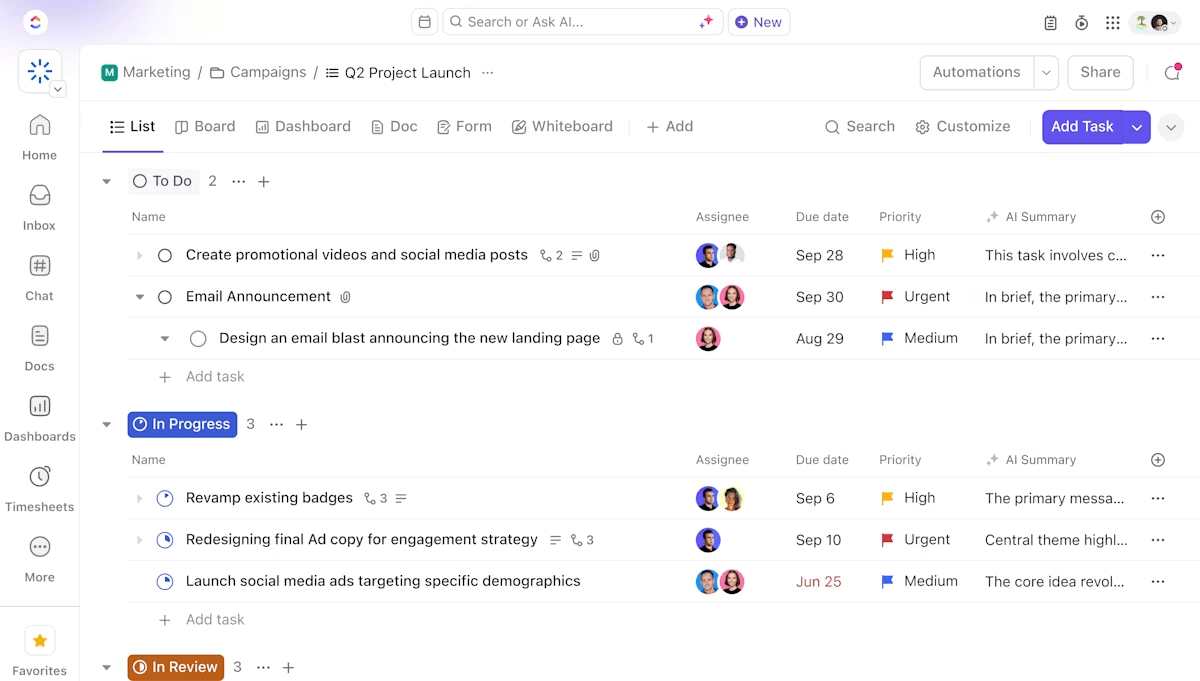
From startups to large enterprises, ClickUp’s flexible architecture scales effortlessly to support everything from small agile squads to globally distributed engineering teams.
A G2 review reads:
ClickUp is extremely flexible and user-friendly. It allows us to manage both Agile and Waterfall workflows with ease, adapting perfectly to the different needs of each team. The platform is highly intuitive, quick to configure, and packed with features like dashboards, custom fields, automations, and more. Its usability really stands out — even non-technical users can get up to speed quickly, which has made adoption seamless across departments.
🧠 Fun Fact: The word “Scrum” in agile didn’t come from tech—it came from rugby! Just like players huddle up and move the ball forward together, Scrum teams work closely to keep projects moving. Agile borrowed the name to emphasize teamwork, momentum, and fast decision-making.
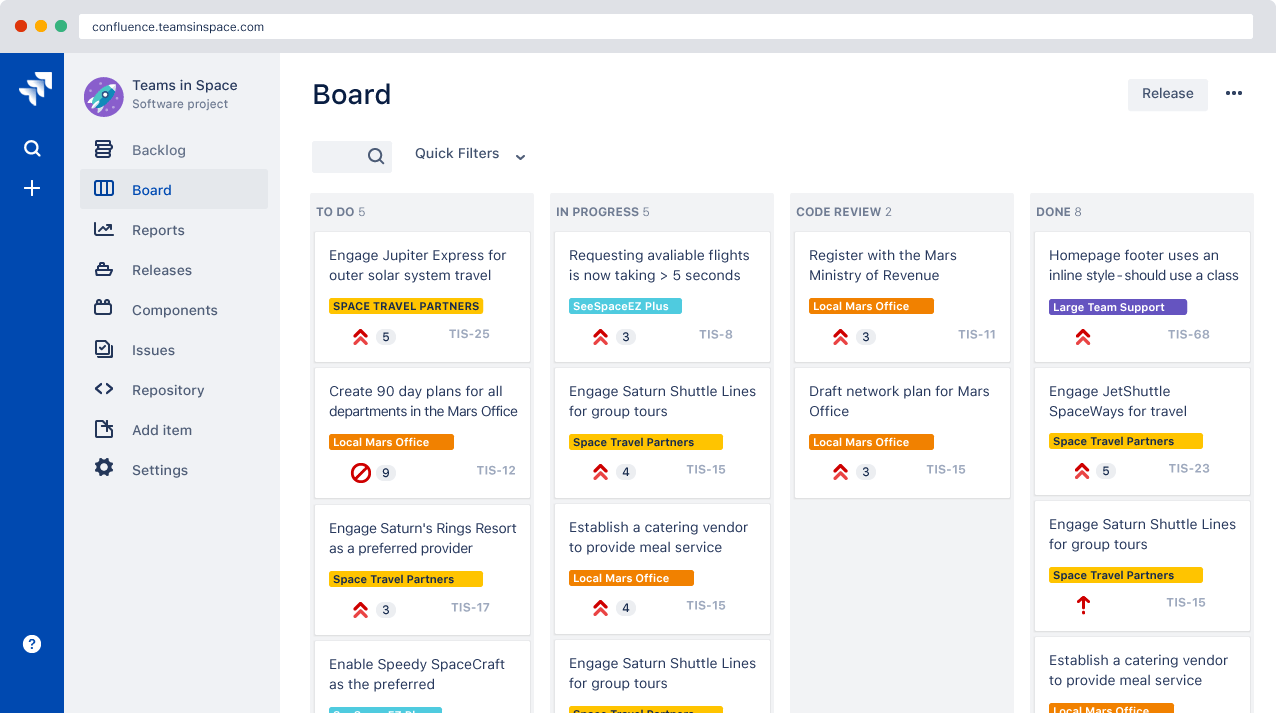
Jira is a full-fledged platform built to support the needs of modern software development teams. Designed by Atlassian with agile workflows at its core, Jira helps teams stay on top of every moving part, from sprint planning and backlog grooming to tracking bugs and shipping releases.
Jira integrates deeply with the tools developers already use. From source control platforms like GitHub and Bitbucket to CI/CD tools and testing suites, Jira acts as a central command hub, pulling in updates and context from across your tech stack.
Unlike legacy tools like FogBugz, Jira offers a far more modern, scalable, and customizable experience.
💡 Pro Tip: Already using Jira but want the flexibility of ClickUp? You don’t have to start from scratch—use ClickUp’s Jira import tool to seamlessly bring in your issues, projects, and workflows. It’s fast, customizable, and keeps your team moving without missing a beat.
📮 ClickUp Insight: Meetings spark innovation and drive action—when they work. But reality? Nearly half of all employees waste valuable time reaching out to colleagues for answers they should already have at their fingertips, creating constant interruptions at work.
ClickUp’s Connected Search and ClickUp Brain eliminate this costly back-and-forth by delivering instant, AI-powered answers from your entire digital ecosystem. Every file, meeting note, recorded clip, and third-party integration becomes searchable knowledge—so no one has to waste time chasing down teammates for information.
💫 Real Results: Teams like QubicaAMF reclaimed 5+ hours weekly using ClickUp—that’s over 250 hours annually per person—by eliminating outdated knowledge management processes. Imagine what your team could create with an extra week of productivity every quarter!
📖 Also Read: Jira Project Management: The Ultimate Guide

YouTrack’s great for flexible project management and issue tracking. It’s also deeply customizable—teams aren’t forced into rigid workflows.
You can tailor everything from issue fields and workflows to commands and reports. The tool actually fits the way you work, not the other way around. Where FogBugz just tracks bugs without agility and depth, YouTrack by JetBrains supports the entire software development lifecycle, from idea to deployment, with much more clarity and control.
YouTrack particularly appeals to teams already invested in the JetBrains ecosystem of developer tools.
A G2 review says:
The best thing about YouTrack is its flexibility and ability to adapt to different workflows. I can customize it to reflect specific project tracking processes, which makes task management more efficient and personalized.
📖 Also Read: Top YouTrack Alternatives and Competitors

Linear is purpose-built for modern product and engineering teams who want to spend less time wrangling tools and more time shipping code.
It excels at straightforward traversal, insertion, and deletion operations—meaning it’s incredibly easy to move through tasks, update statuses, assign work, and delete or archive irrelevant items.
With seamless Git integrations, you can automatically sync commits, PRs, and branches with issues. You also get cycle-based planning (Linear’s version of sprints), built-in velocity tracking, and powerful automations that reduce manual input.
Linear AI, the intelligent assistant, can automatically triage incoming bugs, draft issue descriptions, and even help manage your backlog by identifying similar issues.
📖 Also Read: A Day in the Life of a Software Developer
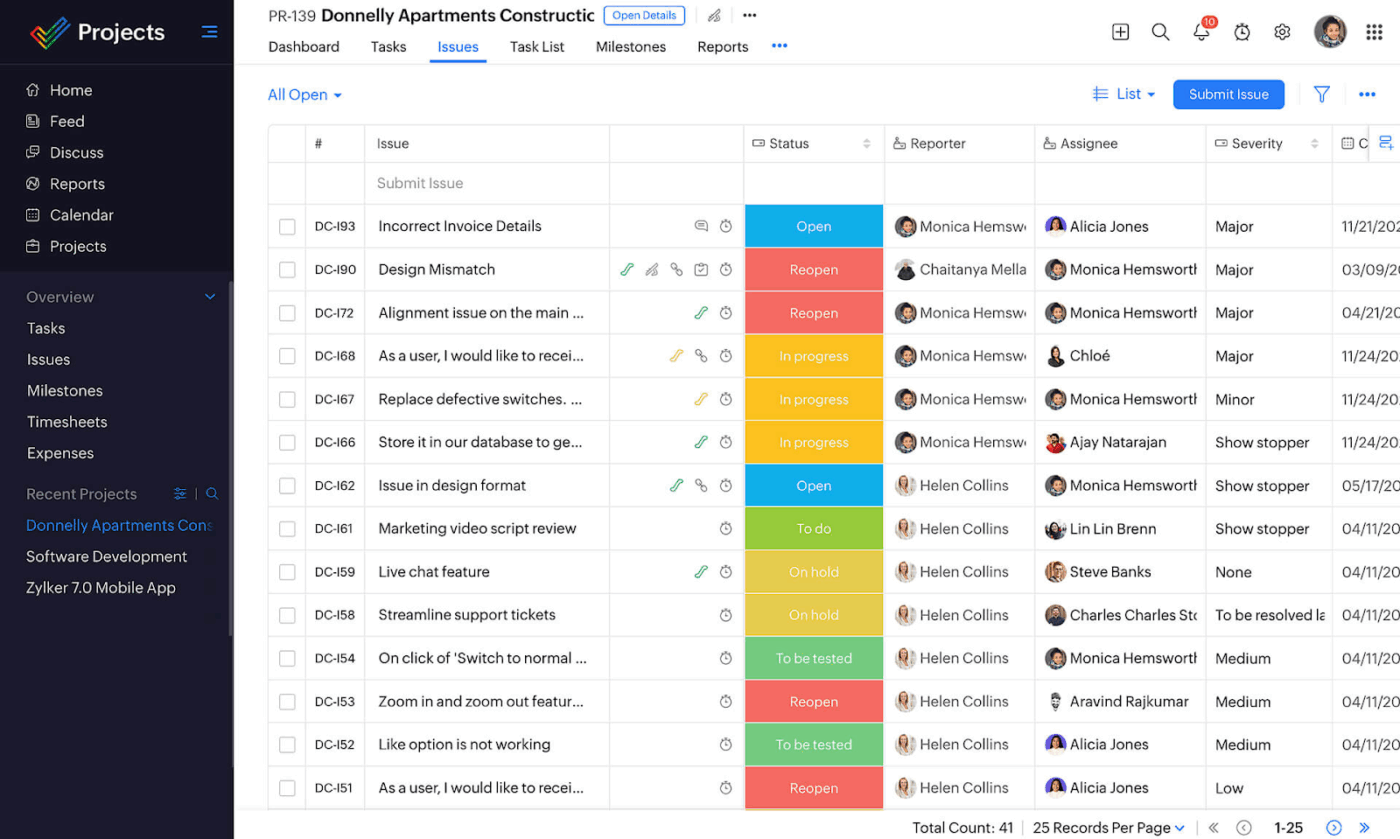
Unlike bulkier platforms that try to be everything at once, Zoho BugTracker is laser-focused on issue resolution. It offers a clean, intuitive interface that’s easy to navigate—even for teams that don’t want to spend time learning yet another overly complex system.
As part of the extensive Zoho ecosystem, this issue-tracking software is a particularly logical choice for businesses using other Zoho applications. From logging bugs and assigning ownership to tracking resolution and post-mortem analysis, everything is streamlined for speed and clarity.
Zoho’s AI assistant, Zia, can help generate reports and provide insights from your project data. Teams can also define custom workflows that mirror their exact bug lifecycle, set up rules to trigger alerts or actions automatically, and use SLAs and time-tracking to ensure nothing slips through the cracks.
A Capterra review reads:
I was looking for a software that helps us to reports the bugs in the software that we develop. Luckily I found the zoho bug tracker and it is very much convenient and super easy for us.
📖 Also Read: Agile Tools For Project Management
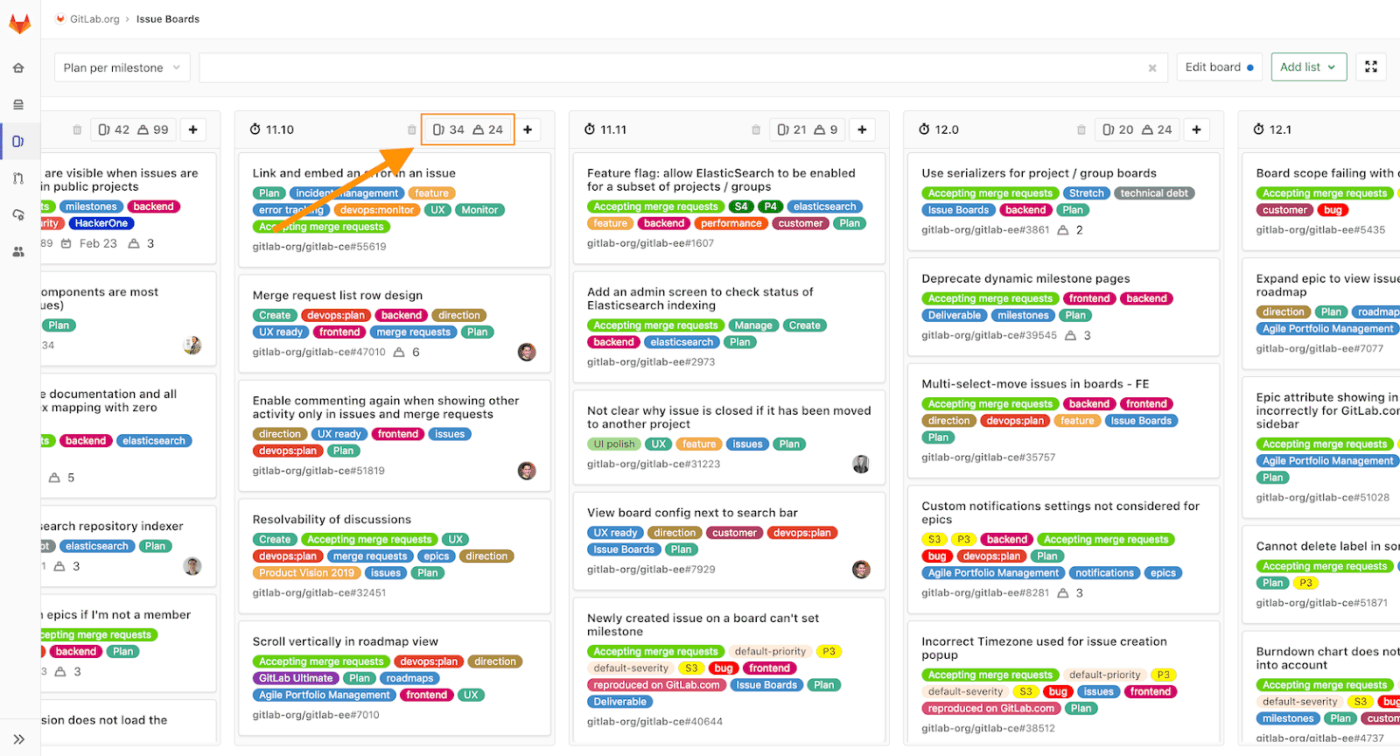
Need an all-in-one open-core DevOps command center? GitLab covers everything from planning and coding to testing, security, deployment, and monitoring. You can automate tests, run security scans, and deploy with ease using simple YAML configurations.
Plus, with built-in support for Kubernetes and integrated tools, such as SAST, DAST, and dependency scanning, GitLab bakes security right into your pipeline.
The platform’s AI-powered capabilities are packaged as GitLab Duo, which assists teams across the lifecycle with discussion summaries and code suggestions.
Unlike FogBugz, which is mainly an issue tracker, GitLab gives your entire team, from devs to release managers, a single platform to collaborate and ship faster.
A G2 review reads:
What I like most is the GitLab brings together version control, CI/CD, issue tracking, and project management in a single tool. I really like how seamless it is to go from writing code to deploying it, all without leaving the platform. The built-in CI/CD is easy to set up, and the merge request workflow helps keep code quality high. It can feel a bit slow sometimes, especially with larger repositories or more complex pipelines.
📖 Also Read: GitLab vs. GitHub: Which DevOps Tool is the Best

If you’re running agile or scrum workflows and need time-tracking along with bug-tracking, Backlog by Nulab has you covered. It combines project management features with developer tools like built-in Git and SVN repositories, so your team can plan, track, and ship—all in one place.
You’ll also find sprint planning boards, burndown charts, milestone tracking, and support for story points and personal projects. Plus, real-time updates and threaded discussions keep everyone aligned without the clutter.
A G2 review reads:
This tool i use it for bug tracking. It help me and my team to find and fix bugs fast. Before using this tool we are using excel sheets to track bugs. But it take lot of time and sometimes confusing for developers. But now with this tool it becomes easy and now developers easily understand. The only thing i dislike is their mobile app which is very slow.
📖 Also Read: Best Collaboration Tools for Software Development
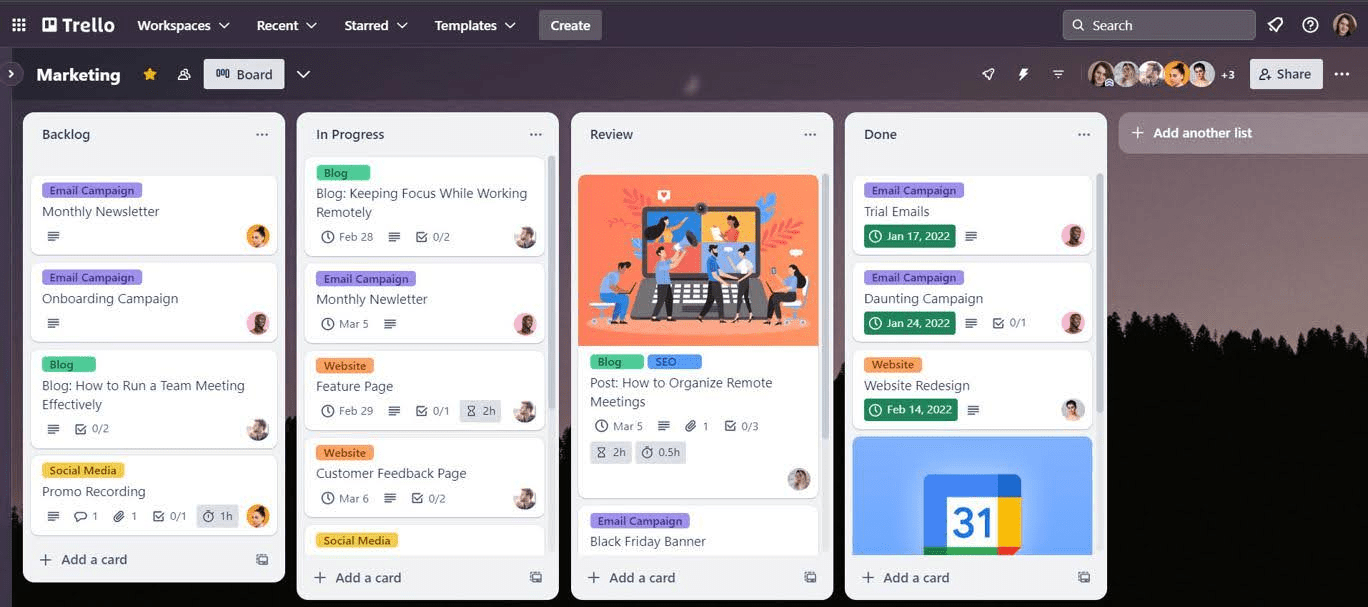
Looking for great software with a customizable interface that can track tasks and bugs with equal ease? Say hello to Trello, a highly visual, user-friendly project management tool that helps teams organize, prioritize, and execute work through an intuitive board-and-card system.
While Trello is not a dedicated issue-tracking tool, it offers flexible boards, lists, and cards that can be configured for bug-tracking workflows. Designed around the simplicity of Kanban, Trello lets you create a dedicated bug tracker board, use lists to represent different bug statuses, and assign cards to team members for resolution.
This task and collaboration tool is purpose-built for team-wide management across technical and non-technical roles. It encourages cross-functional visibility, something FogBugz doesn’t naturally support.
As an Atlassian product, Trello also incorporates Atlassian Intelligence to streamline communication and planning.
📖 Also Read: Best Trello Alternatives and Competitors
Software development isn’t just about writing great code—it’s about bringing teams, tools, and business processes together smoothly.
From managing user stories and tracking bugs to organizing code review sessions, you need a project management tool that truly understands how agile teams work.
ClickUp’s custom workflows adapt to your team’s preferred methods, whether you use Scrum, Kanban, agile, or a mix of both.
It combines project management, issue tracking, and team collaboration into a single, streamlined platform, eliminating the need to juggle multiple tools. Cross-functional collaboration becomes natural when product managers, developers, and customer success teams work from the same source of truth!
Ready to speed up your development cycle, cut costs, and ship better products?
Sign up for ClickUp today (it’s free)!
© 2025 ClickUp